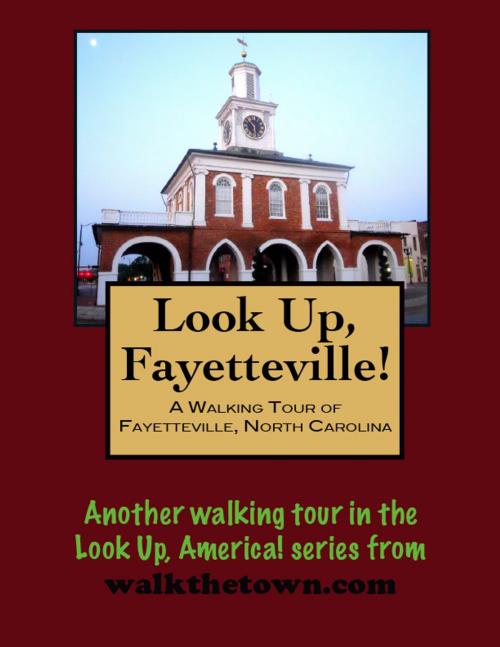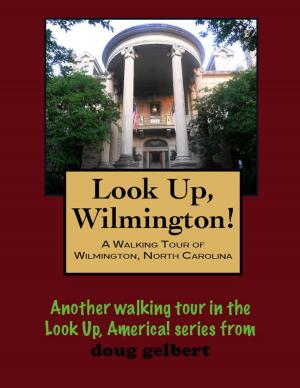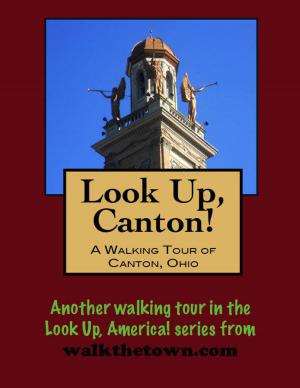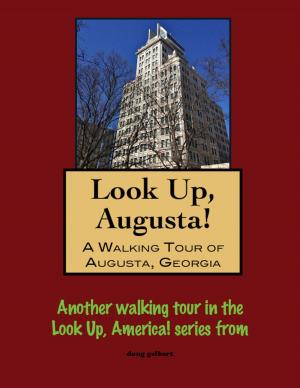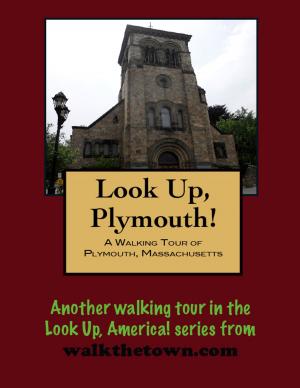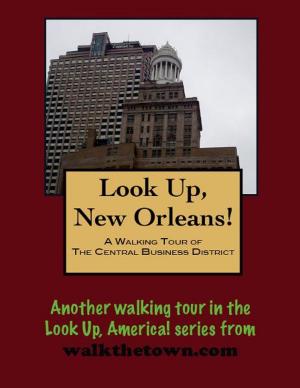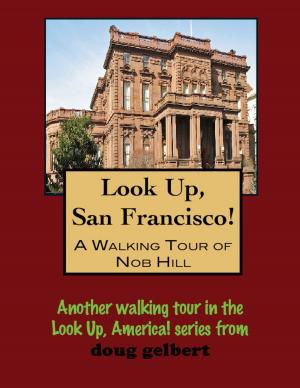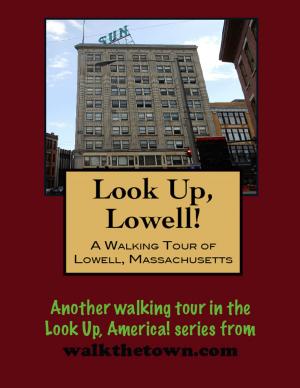| Author: | Doug Gelbert | ISBN: | 9781458038210 |
| Publisher: | Doug Gelbert | Publication: | June 12, 2011 |
| Imprint: | Smashwords Edition | Language: | English |
| Author: | Doug Gelbert |
| ISBN: | 9781458038210 |
| Publisher: | Doug Gelbert |
| Publication: | June 12, 2011 |
| Imprint: | Smashwords Edition |
| Language: | English |
There is no better way to see America than on foot. And there is no better way to appreciate what you are looking at than with a walking tour. Whether you are preparing for a road trip or just out to look at your own town in a new way, a downloadable walking tour is ready to explore when you are.
Each walking tour describes historical and architectural landmarks and provides pictures to help out when those pesky street addresses are missing. Every tour also includes a quick primer on identifying architectural styles seen on American streets.
Money was the reason for the founding of Fayetteville. As the interior of the Carolinas was being settled in the 1700s merchants on the coast in Wilmington were concerned that the new trade would take place on the Pee Dee River and wind up down in Charleston. They wanted a settlement at the head of navigation on the Cape Fear River, the only navigable waterway entirely in the colony of North Carolina. Scotsmen did the job and the small village of Campbelltown emerged on the banks of the Cape Fear River in 1739. A decade later more Scots established a gristmill and village at Cross Creek, a mile northwest of Campbelltown where, in fact, two streams crossed.
The area became a Tory stronghold as the American colonies moved towards revolution and more than 50 dissenting Whigs gathered in town at Liberty Point on June 20, 1775 and signed resolutions pledging themselves to "resist force by force" and to go forth and be ready to sacrifice our lives and fortunes to secure freedom and safety." Robert Rowan, an officer in the French and Indian War who settled in Cross Creek as a merchant, became a leader of the Patriot cause and distributed the statement as the "Libert Point Resolves."
Following the Revolution in 1783 the settlements of Cross Creek and Campbelltown united and were incorporated. Still flush with fervor of patriotism the citizens named the new town Fayetteville, the first to honor the Marquis de Lafayette, major general and top aide to George Washington in the battle for independence. From 1789 until 1793 the General Assembly met in Fayetteville as it served as state capital. The United States Constitution was ratified here and the University of North Carolina chartered. In a vote to create a new state capital, Fayetteville lost out by one vote to legislators who preferred to build a capital from scratch rather than anoint an existing town.
Still, the town prospered into the 1800s, second only to Wilmington in population. Then, on May 29, 1831, sometime around noon a fire started in a kitchen of a house on the northwest corner of Market Square in the center of town. It was a windy day and embers blew from roof to roof of light pine buildings, outpacing the efforts of volunteer firefighters. Four hours later more than 600 homes and 105 stores and businesses had burned. Every church in town, save one, was destroyed. Luckily the fire had started in the middle of the day and everyone was able to escape with their lives. America had never seen anything like it. The entire town was gone. But in an age before federal assistance more than $100,000 in private donations from all over the country was raised and distributed to the Fayetteville people to rebuild.
The river continued to fuel Fayetteville's economy and the railroads began arriving after 1870 to handle the region's trade in lumber and textiles. In 1918 Camp Bragg was established as an artillery training ground and following World War I it became a permanent Army post and Fort Bragg, home to several U.S. Army airborne units, has cast its influence on the town ever since. In September 2008, Fayetteville annexed 85% of Fort Bragg, bringing the official population of the city to 206,000.
Our walking tour will begin in the shadow of the likeness of Gilbert du Motier, for whom the town is named...
There is no better way to see America than on foot. And there is no better way to appreciate what you are looking at than with a walking tour. Whether you are preparing for a road trip or just out to look at your own town in a new way, a downloadable walking tour is ready to explore when you are.
Each walking tour describes historical and architectural landmarks and provides pictures to help out when those pesky street addresses are missing. Every tour also includes a quick primer on identifying architectural styles seen on American streets.
Money was the reason for the founding of Fayetteville. As the interior of the Carolinas was being settled in the 1700s merchants on the coast in Wilmington were concerned that the new trade would take place on the Pee Dee River and wind up down in Charleston. They wanted a settlement at the head of navigation on the Cape Fear River, the only navigable waterway entirely in the colony of North Carolina. Scotsmen did the job and the small village of Campbelltown emerged on the banks of the Cape Fear River in 1739. A decade later more Scots established a gristmill and village at Cross Creek, a mile northwest of Campbelltown where, in fact, two streams crossed.
The area became a Tory stronghold as the American colonies moved towards revolution and more than 50 dissenting Whigs gathered in town at Liberty Point on June 20, 1775 and signed resolutions pledging themselves to "resist force by force" and to go forth and be ready to sacrifice our lives and fortunes to secure freedom and safety." Robert Rowan, an officer in the French and Indian War who settled in Cross Creek as a merchant, became a leader of the Patriot cause and distributed the statement as the "Libert Point Resolves."
Following the Revolution in 1783 the settlements of Cross Creek and Campbelltown united and were incorporated. Still flush with fervor of patriotism the citizens named the new town Fayetteville, the first to honor the Marquis de Lafayette, major general and top aide to George Washington in the battle for independence. From 1789 until 1793 the General Assembly met in Fayetteville as it served as state capital. The United States Constitution was ratified here and the University of North Carolina chartered. In a vote to create a new state capital, Fayetteville lost out by one vote to legislators who preferred to build a capital from scratch rather than anoint an existing town.
Still, the town prospered into the 1800s, second only to Wilmington in population. Then, on May 29, 1831, sometime around noon a fire started in a kitchen of a house on the northwest corner of Market Square in the center of town. It was a windy day and embers blew from roof to roof of light pine buildings, outpacing the efforts of volunteer firefighters. Four hours later more than 600 homes and 105 stores and businesses had burned. Every church in town, save one, was destroyed. Luckily the fire had started in the middle of the day and everyone was able to escape with their lives. America had never seen anything like it. The entire town was gone. But in an age before federal assistance more than $100,000 in private donations from all over the country was raised and distributed to the Fayetteville people to rebuild.
The river continued to fuel Fayetteville's economy and the railroads began arriving after 1870 to handle the region's trade in lumber and textiles. In 1918 Camp Bragg was established as an artillery training ground and following World War I it became a permanent Army post and Fort Bragg, home to several U.S. Army airborne units, has cast its influence on the town ever since. In September 2008, Fayetteville annexed 85% of Fort Bragg, bringing the official population of the city to 206,000.
Our walking tour will begin in the shadow of the likeness of Gilbert du Motier, for whom the town is named...
